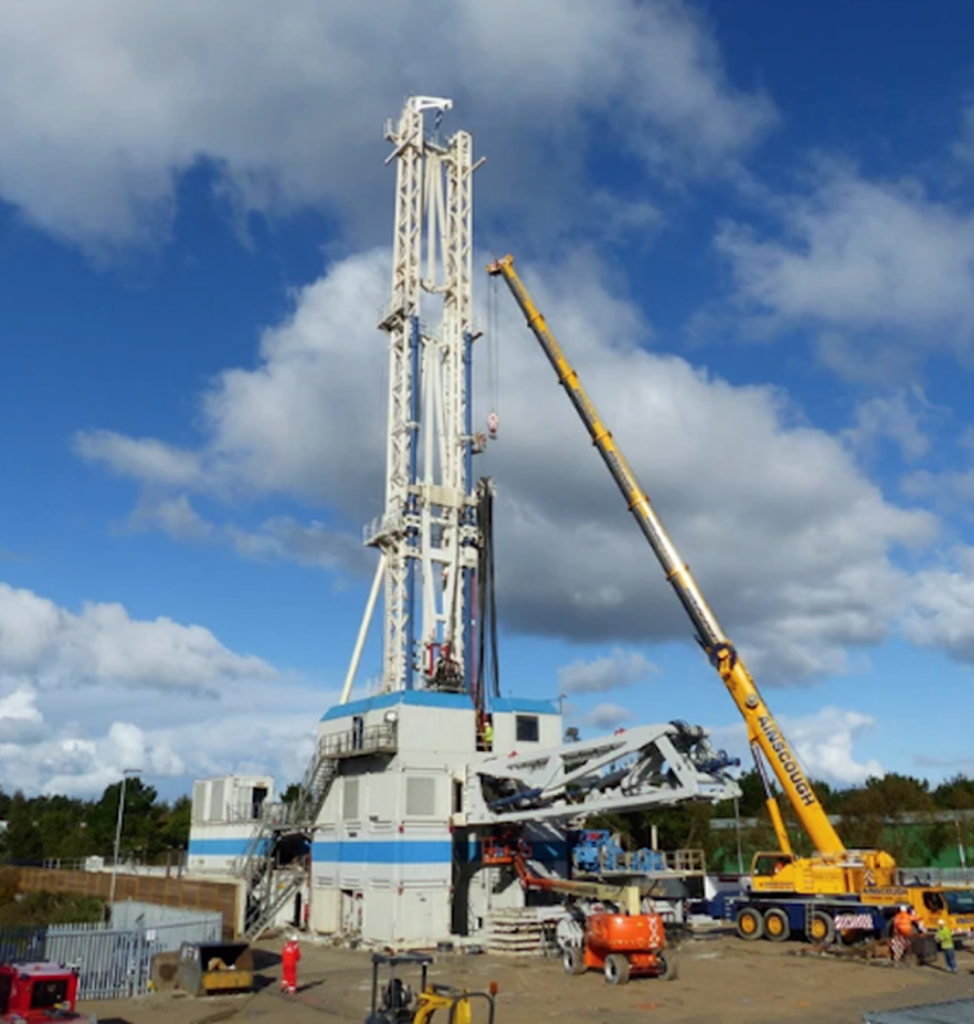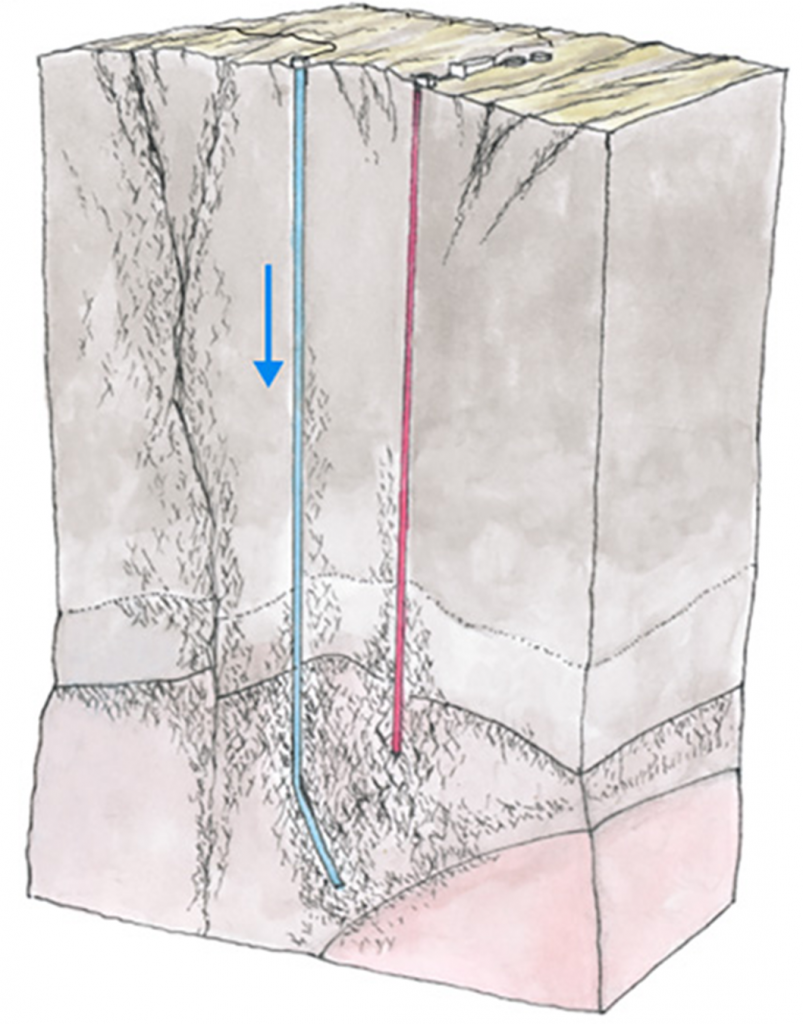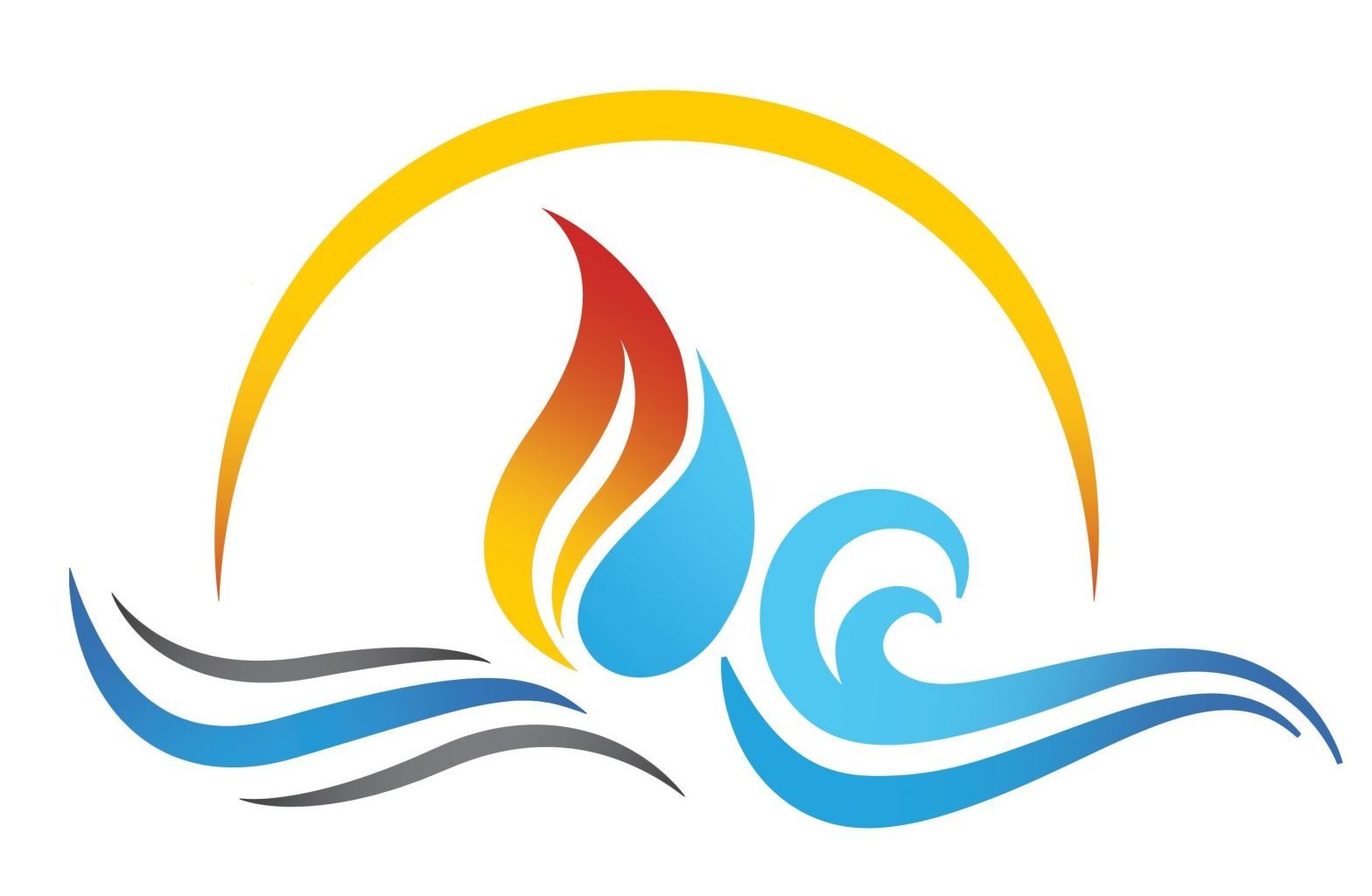After identifying with good geothermal temperature gradients, assuming they demonstrate the potential of temperatures suitable for development at reasonable drilling depths, a small number of exploration wells would be planned;
We would typically drill at least two deep exploration wells that, if successful, could be used as pilot wells – one for production and one for injection to test circulation of existing subsurface or surface fluids for heat transfer. Depending on the type of geothermal system (sedimentary or volcanic/intrusive), the initial target depth of these wells would be estimated from the prior geophysical and borehole data;

Sedimentary rock wells would typically be looking for hydrothermal reservoirs or deep saline aquifers that have the porosity and permeability necessary for heat transfer to circulating fluids. Drilling deep pilot wells into these formations would provide more knowledge of deeper lithologies (including porosity and permeability), fluid compositions, and heat flux than obtained from the thermal boreholes. Pilot production and injection wells would help test circulation and heat transfer.
Volcanic / intrusive rock wells would typically be looking for fault and fracture systems which may extend over a greater range of depth. It may be possible to only drill to a shallower depth to gain enough knowledge of deeper lithologies (including fault and fracture systems) and heat flux than obtained from the thermal boreholes. Deeper wells would help try to access any hydrothermal fluids found to be present from up-flows, but otherwise would be looking for effective permeability systems in hot dry rock formations. It may be possible to drill wells able to be used for eventual injection purposes in the development phase. In this exploration phase, two wells could be drilled to serve as pilot EGS wells – one for production and one for injection to test fluid injectability and circulation through faults and fractures systems potentially not previously imaged in enough detail. Pilot wells are sometimes deepened during development.

Pilot wells would be able to access gases in the drilling mud which could help characterise fluid origins and interactions. Geophysical logging measurements using hydrocarbon exploration standard tools including spectral natural gamma and acoustic logs, and resistivity images would help characterise rock compositions, physical properties, structures, and formation geometries intersected at depth by the wells.
All of this Exploration technical information will help make the necessary decisions to take the next step into development of the Geothermal Energy resource. Lessons learned will help better target wells to access these resources and improve the well construction designs and performance of the subsequent development wells.
